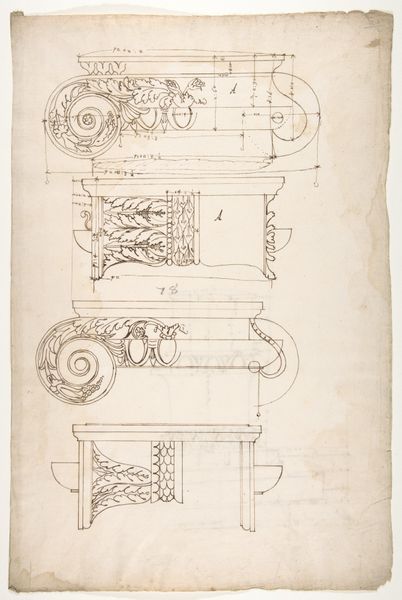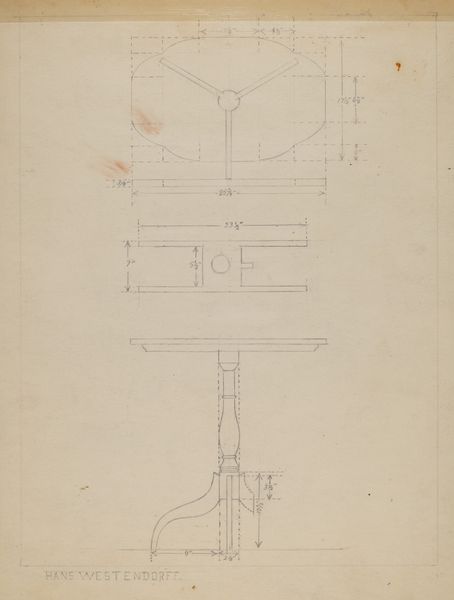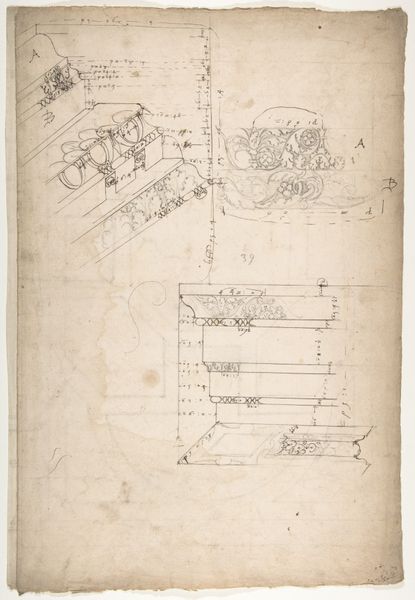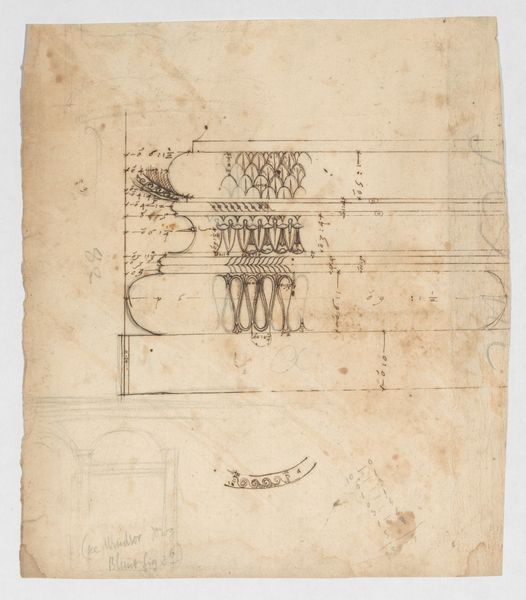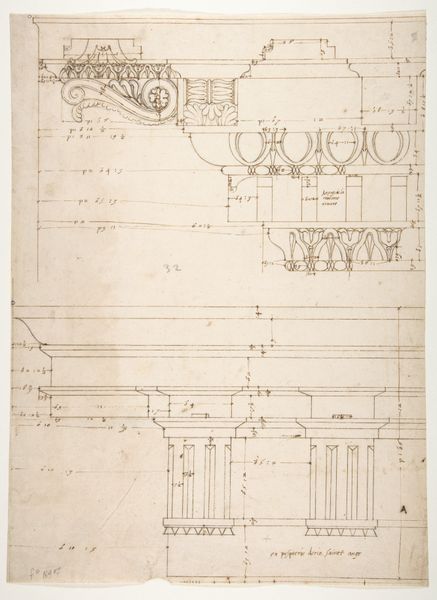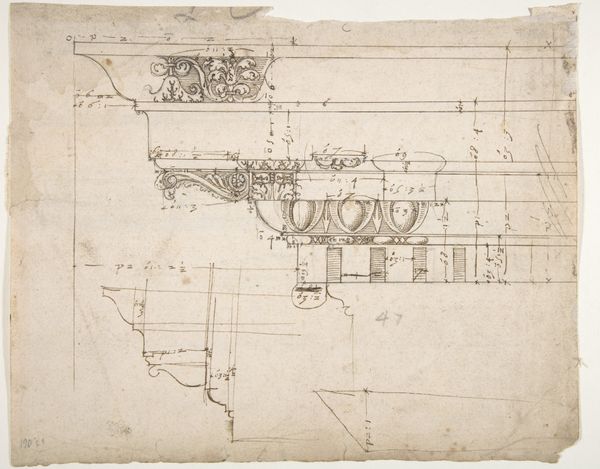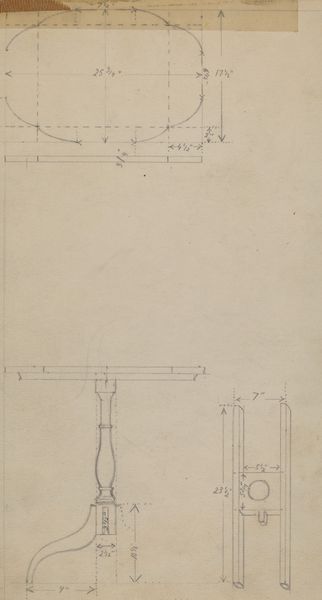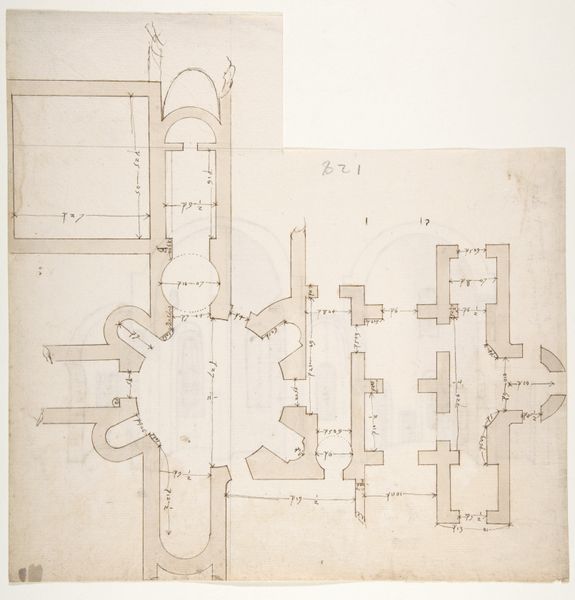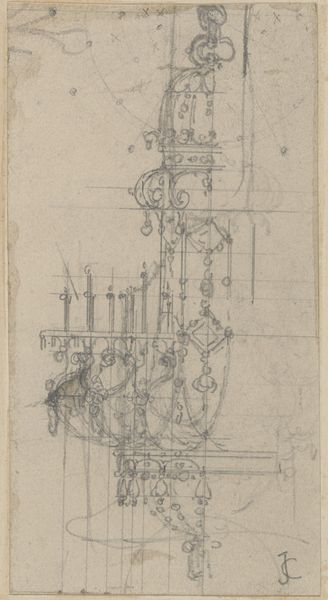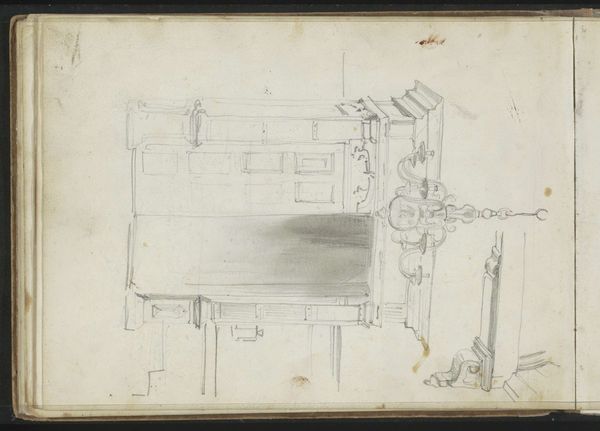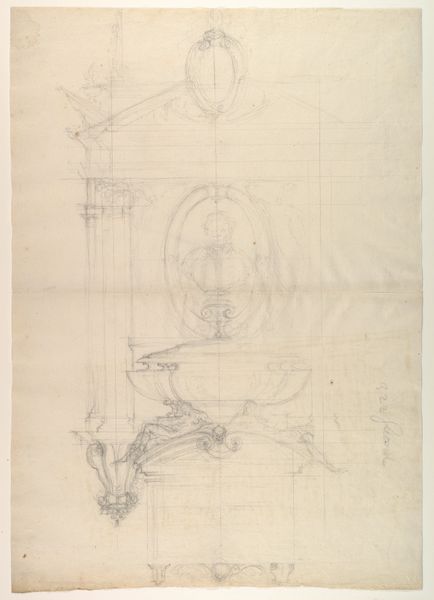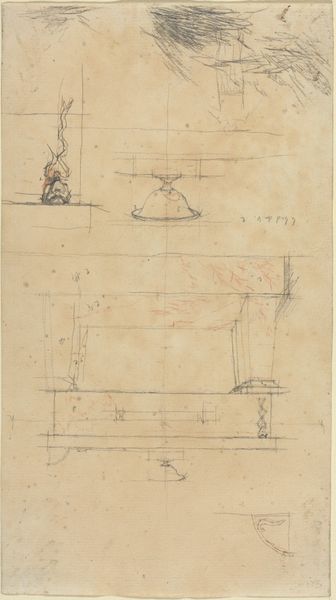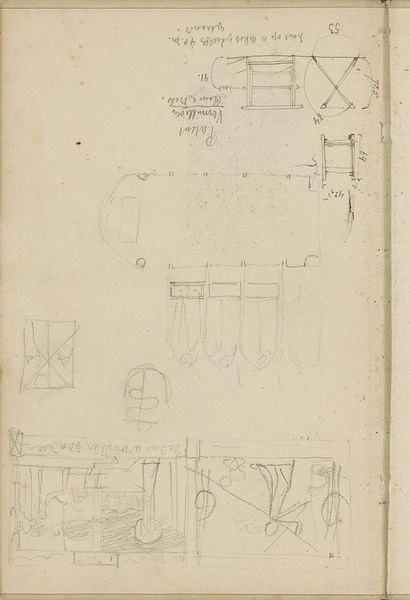
Unidentified, Ionic capital, front and side elevations with small studies (recto) calculation notes (verso) 1500 - 1560
0:00
0:00
drawing, print, paper, pencil
#
drawing
# print
#
classical-realism
#
paper
#
geometric
#
ancient-mediterranean
#
pencil
#
academic-art
Dimensions: sheet: 17 5/16 x 11 1/2 in. (44 x 29.2 cm)
Copyright: Public Domain
Editor: This is a drawing from sometime between 1500 and 1560, titled "Unidentified, Ionic capital, front and side elevations with small studies," created anonymously, using pencil, drawing, and print on paper. It shows technical drawings with careful details and dimensions of architectural elements. What stands out to me is the dedication to classical ideals even in what seems like a simple preparatory sketch. How would you interpret this piece within its historical context? Curator: Well, drawings like this were fundamental to the Renaissance's engagement with classical antiquity. This isn't just a practical guide; it reflects a deliberate attempt to revive the grandeur and order of ancient Roman architecture. It speaks volumes about the aspirations of the artists and patrons of the time. Consider how these drawings were used—as blueprints, yes, but also as symbols of cultural authority and connection to a perceived golden age. How might the increasing availability of printed versions of such drawings impacted architectural practices, or even public perception of architecture, during this period? Editor: That makes me think about the way knowledge was disseminated at the time. If these were printed and circulated, they'd have democratized classical design principles, influencing architecture far beyond the elite circles. Curator: Precisely. The Ionic capital, for instance, becomes a motif, not just a structural element. Its replication and adaptation throughout the period speak to a desire for a visual language of power and order. Now, look at the drawing itself—the precision, the annotations. Does this remind you of other art forms from the period that reflect humanistic principles of rational thought, order, and control? Editor: Yes, it seems linked to the same values we find in, say, Renaissance painting and sculpture—a desire for realism and idealization, guided by geometry and proportion. Curator: Absolutely. Understanding drawings like this offers insights into not only artistic techniques but also into the broader cultural and intellectual movements that shaped the Renaissance and the world it subsequently influenced. We see this dialogue with the past continuing even today. Editor: I never considered how technical drawings could reveal so much about social and cultural values. I'll definitely view these types of works in museums differently going forward.
Comments
No comments
Be the first to comment and join the conversation on the ultimate creative platform.
